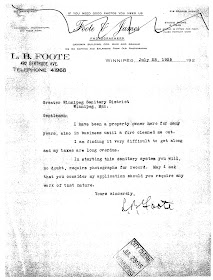Yes! David and Glenn Bergen from the press and I spent hours down there. We looked at literally EVERY photograph in the provincial collection, which is not even all the Foote photographs in existence. Many of them are simply extraordinary. Everyone should go down there and look at them.
7) What’s your favourite image in the book?
 My favourite is a photograph I write about in the introduction. It appears on page 32 of the book. It is a woman in Aboriginal dress, her hair in braids, smoking a pipe. Many of Foote’s images are technically almost perfect. This one is partly hazy and has a ghost-like blur on one side, and a little girl in a white party dress. The woman is a mystery to me, and I like that. I don’t think history should be about definitive answers. Sometimes the questions are far more interesting.
My favourite is a photograph I write about in the introduction. It appears on page 32 of the book. It is a woman in Aboriginal dress, her hair in braids, smoking a pipe. Many of Foote’s images are technically almost perfect. This one is partly hazy and has a ghost-like blur on one side, and a little girl in a white party dress. The woman is a mystery to me, and I like that. I don’t think history should be about definitive answers. Sometimes the questions are far more interesting. 8) What's next for you? What are you working on now, beyond the collections?
I’ve been working on a book about the men and women who designed Saskatchewan’s first medicare policies, after Tommy Douglas was elected in 1944. There are two Winnipeggers in it, actually. It is called Red Medicine: Transnational Lives and the Birth of Medicare.
 After it is finished, I want to write a book about my father. He was a music teacher, a Welshman. His family members were Welsh nationalists. He taught me a lot about curiosity and independence of thought, but also tolerance. We lived in rural Saskatchewan, where he built rock gardens, took me bird watching, drove a turquoise Peugeot, and wore a Sherlock Holmes-style hat and a British overcoat to work. As you can imagine, he was considered a total weirdo. This never bothered him. He developed Alzheimer’s Disease when he was in his fifties. Last year, I inherited his old records, which he often played in the house when I was young. My plan is to write my memories of him one record at a time. My partner Todd and I are building a cottage on the beautiful Whitemouth River, and I plan to listen to my dad’s records and write a sort of biography, which will also be a history of an immigrant life. I am going to start with Peter Ustinov’s classic recording of Prokofiev’s “Peter and the Wolf.”
After it is finished, I want to write a book about my father. He was a music teacher, a Welshman. His family members were Welsh nationalists. He taught me a lot about curiosity and independence of thought, but also tolerance. We lived in rural Saskatchewan, where he built rock gardens, took me bird watching, drove a turquoise Peugeot, and wore a Sherlock Holmes-style hat and a British overcoat to work. As you can imagine, he was considered a total weirdo. This never bothered him. He developed Alzheimer’s Disease when he was in his fifties. Last year, I inherited his old records, which he often played in the house when I was young. My plan is to write my memories of him one record at a time. My partner Todd and I are building a cottage on the beautiful Whitemouth River, and I plan to listen to my dad’s records and write a sort of biography, which will also be a history of an immigrant life. I am going to start with Peter Ustinov’s classic recording of Prokofiev’s “Peter and the Wolf.”That record used to scare me to death.









